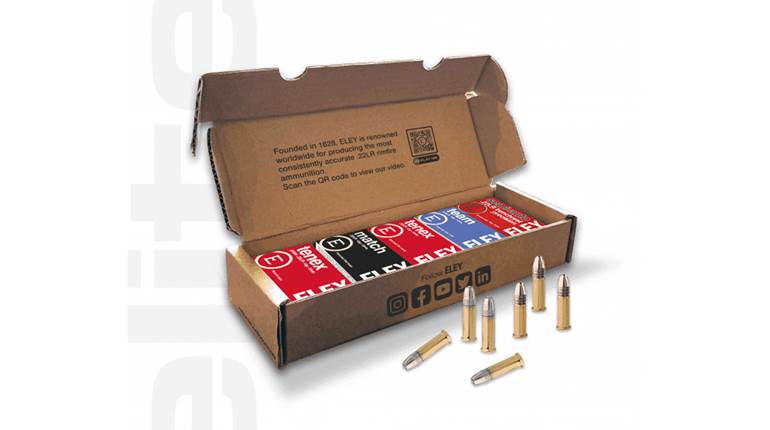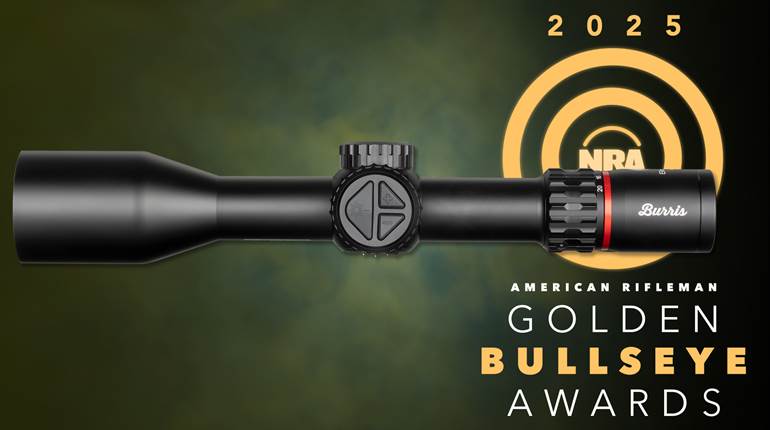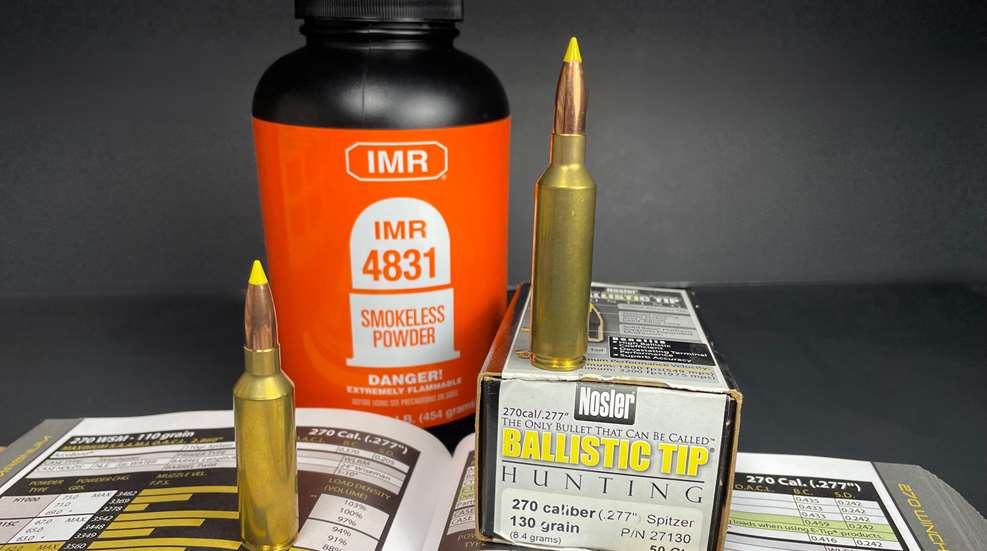
Selecting the proper projectile is easy. Picking the perfect propellant to complement it, however, isn’t so straightforward and can slow or derail the load development process. Why? Crack open any reputable reloading manual or pamphlet, or visit the website of any propellant manufacturer, and you’ll instantly have your answer. There is often a dozen or more options. So how do you know which one to choose? In the following sections, you’ll learn about sources you should be referencing, propellant types, burn rate, load density and more, with each playing a critical part of the decision-making process.
Reputable Data
It should go without saying, but only consult a trustworthy source for your reloading data. The Internet is rampant with armchair “experts,” as well as friendly souls willing to share what has “worked” for them. Avoid this advice.
In many cases—with numerous rifles and a select few handgun cartridges—the SAAMI-established maximum average pressure (M.A.P.) is upward of 65,000 p.s.i., and that pressure is near your face. Is that the time you want to trust online information from ballisticSteve or 3006bests308 (both fictional names I concocted)—essentially some person who likely doesn’t have the proper equipment or experience to perform trustworthy testing? Didn’t think so.
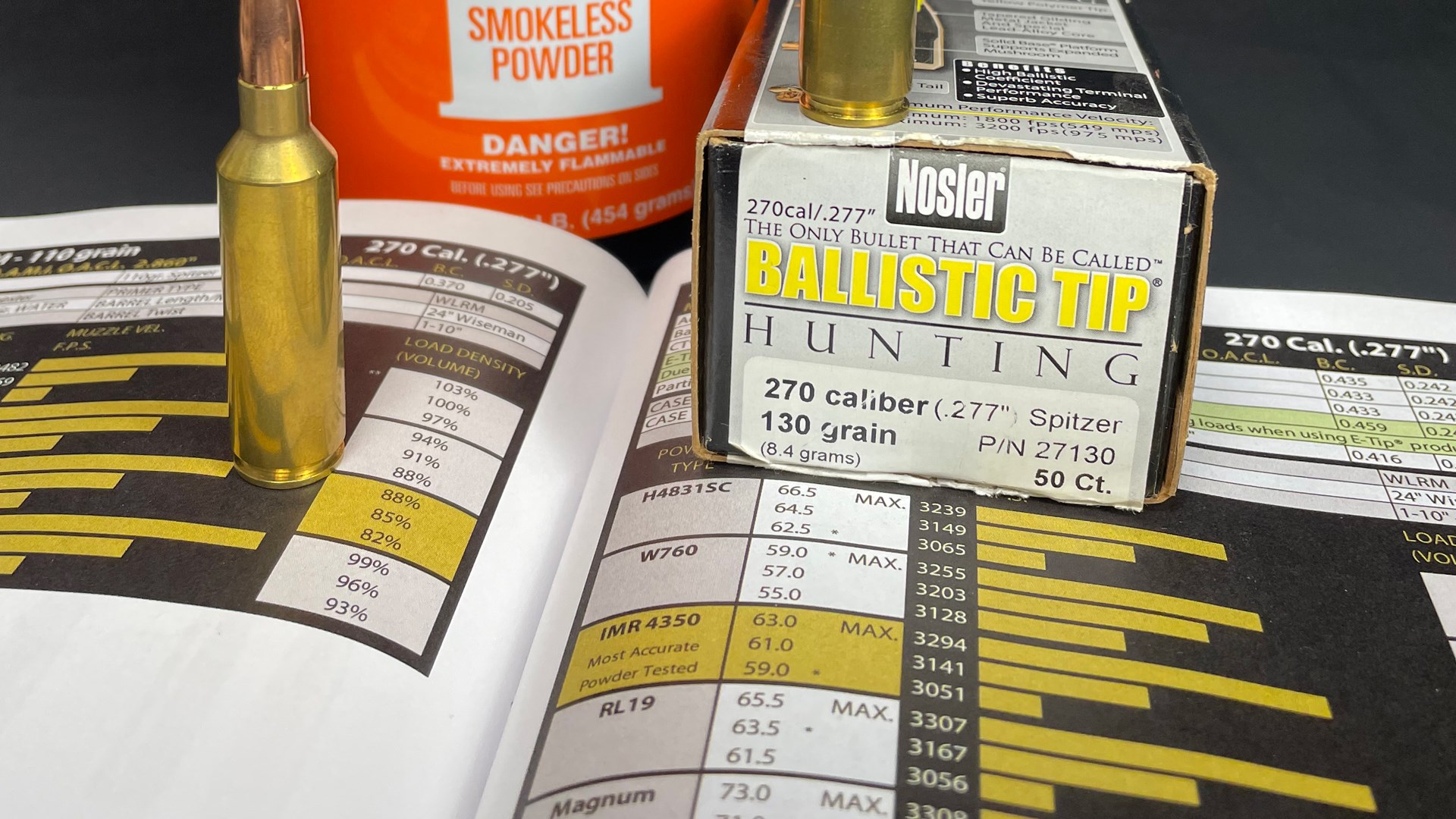
Reputable reloading data is so easy to come by that it amazes me that handloaders would trust an unknown source, but I digress. Rather than risk life and limb, begin your propellant selection journey with the manufacturers of the products; all propellant makers have excellent, easy-to-use data on their websites. Included are: Alliant, Hodgdon (Hodgdon, Winchester, Accurate, Ramshot, and IMR), Shooters World, Venctan and Vihtavuori, to name a few. Other great sources are pamphlets from these makers and bound volumes from bullet manufacturers, such as Barnes, Berger, Hornady, Nosler, Sierra, Speer, Swift, Woodleigh and others. Load recipes increasingly grace the websites of the aforementioned projectile makers as well. Other first-rate resources the Lee Precision, Inc., Modern Loading, Second Ed., manual and that from Lyman. Follow the recommendations/data from the aforementioned sources.
Size, Shape And Composition Matters
Modern smokeless propellant is either single- (nitrocellulose) or double-based (nitrocellulose and nitroglycerine) in composition. According to Nosler Reloading Guide No. 7, “The individual granules of both types of powder are further coated with a variety of chemicals to control burn rate, increase storage life, decrease temperature sensitivity, decrease muzzle flash, and aid in powder handling, [as well as limit barrel fouling].” These characteristics should be considered when choosing a powder. But, that’s not all.
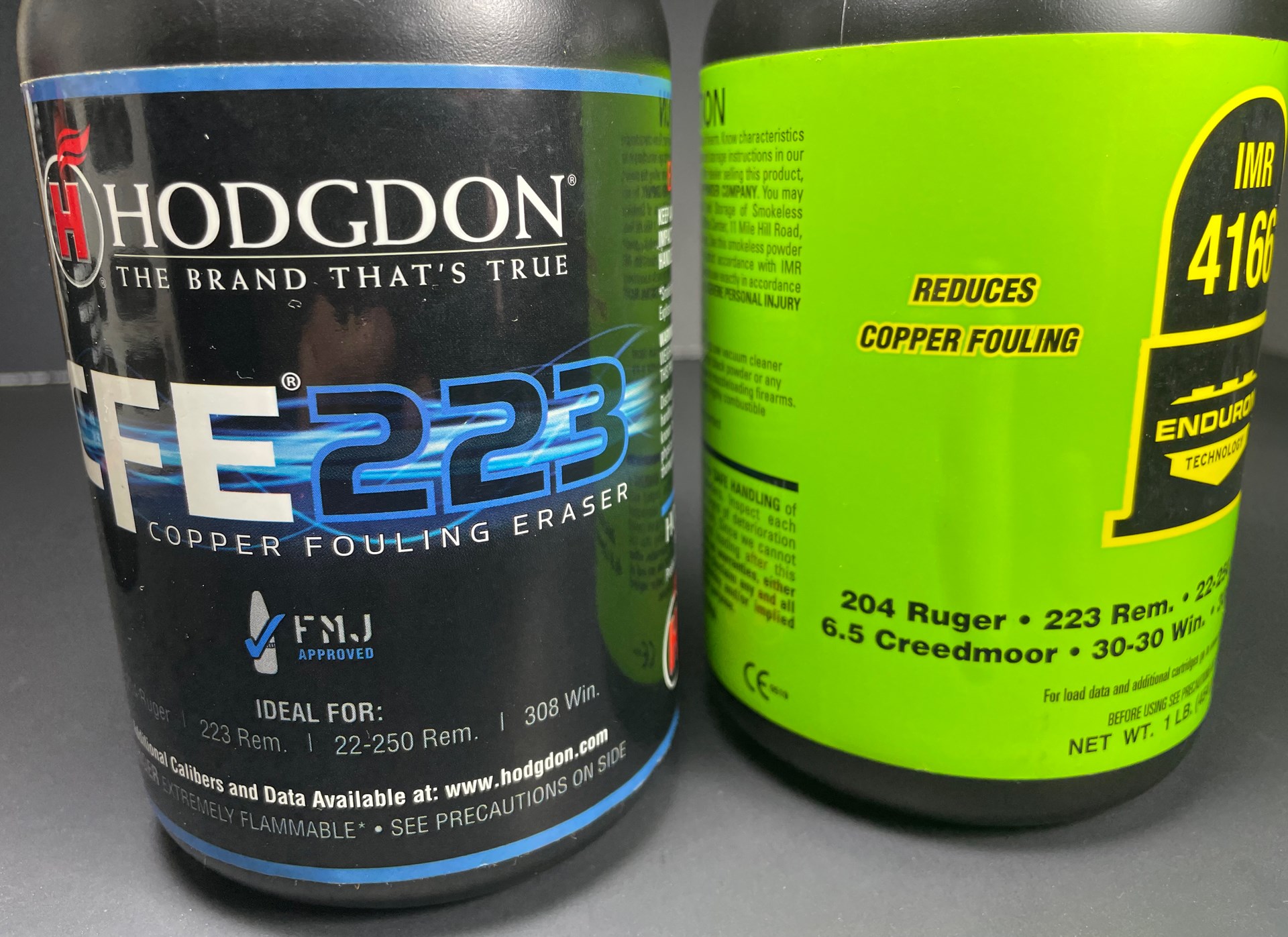 New propellants, such as Hodgdon CFE 223 and IMR 4166, often have additives to reduce/remove copper fouling through shooting. If you’re a high-volume shooter, you should look for such propellants among those suitable for your cartridge/bullet recipes.
New propellants, such as Hodgdon CFE 223 and IMR 4166, often have additives to reduce/remove copper fouling through shooting. If you’re a high-volume shooter, you should look for such propellants among those suitable for your cartridge/bullet recipes.
Propellant also comes in multiple configurations: extruded (stick); flake; and spherical (ball). While the shape doesn’t necessarily determine burn rate (and thus suitability), it can affect flow (from a measure and though a funnel, if used), case capacity, and ignition—particularly in cartridge cases traditionally using large rifle (LR) primers but reconfigured for small rifle (SR) primers and employed in colder weather. But that’s smokeless propellants 201. If not obvious, consulting the product manufacturer’s websites will disclose what shape (and relative burn rate) it is.
 Most propellants are found in these three generic shapes, with each having advantages and drawbacks. From l. to r.: flake, spherical, and extruded (stick).
Most propellants are found in these three generic shapes, with each having advantages and drawbacks. From l. to r.: flake, spherical, and extruded (stick).
Given their elongated, cylindrical shape, extruded propellants don’t flow as well from a measure or through a funnel; they tend to hang up. Why does it matter? It could lead to incorrect charges, spillage and difficulty charging small-caliber cases. They also don’t compact in a case as easily, leaving extra space. Shortened versions of some extruded propellants, such as Hodgdon’s “short cut” (SC) series, exist to reduce the aforementioned drawbacks. Flake (primarily used for shotguns and handguns) and spherical (ball) shaped propellants generally flow easily and, for a given weight, occupy more of a given space. However, the latter, in particular, can be more difficult to ignite in large volumes, requiring a magnum-type primer in some cases to do so. Their ease of use easily offsets this. The latter propellant type is preferable for small-caliber rifles for obvious reasons, as well as using long, heavy-for-caliber bullets that occupy much case space without heavy compression.
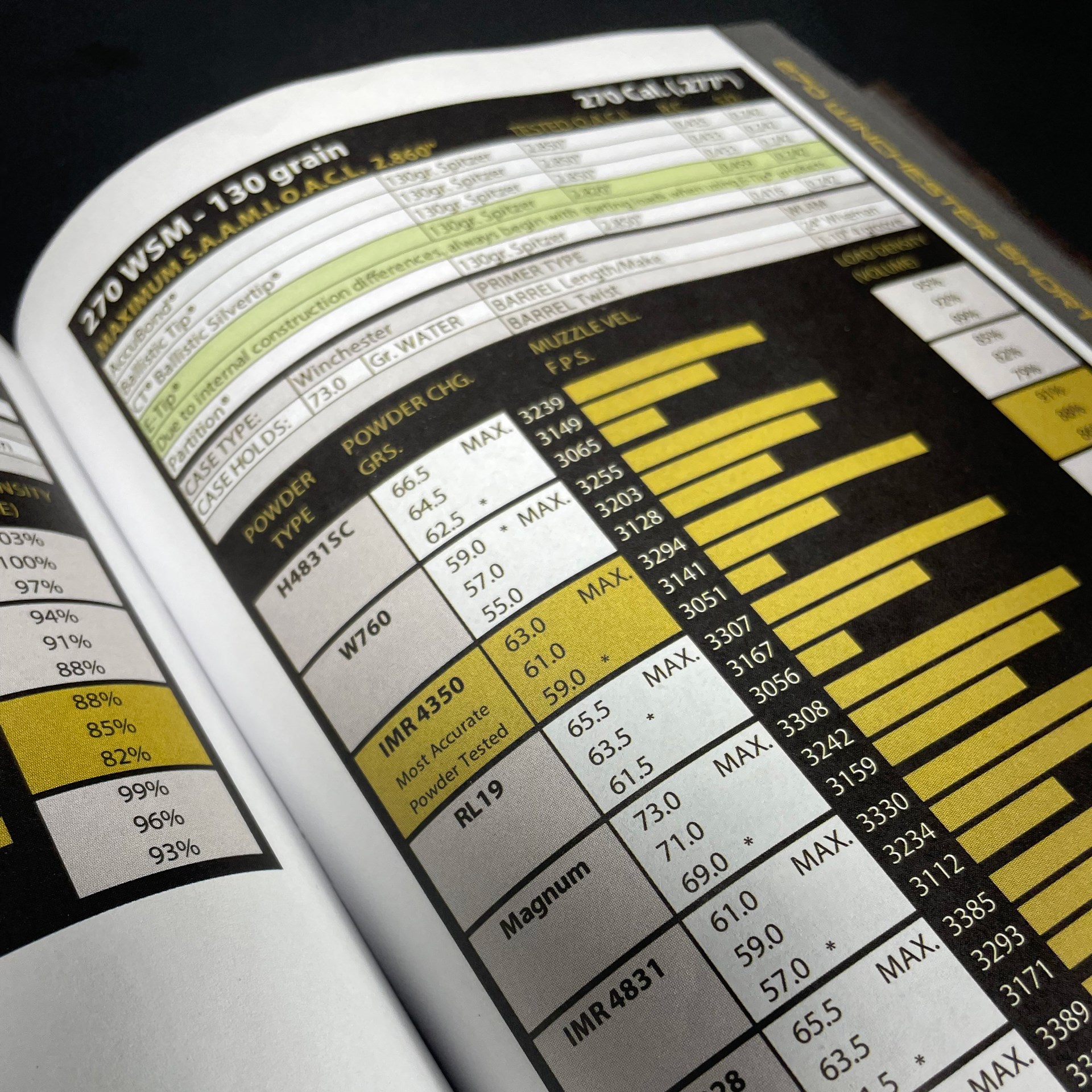 A good place to get started when seeking a propellant is the one designated as being the most accurate by a bullet manufacturer. Here, Nosler found IMR 4350 to be the best bet with 130-grain bullets in the .270 WSM.
A good place to get started when seeking a propellant is the one designated as being the most accurate by a bullet manufacturer. Here, Nosler found IMR 4350 to be the best bet with 130-grain bullets in the .270 WSM.
Burn Rate, Barrel Length, And More
Burn rate is relative. According to Nosler Reloading Guide No. 7, “There is no calibrated rating scale for powder burn rate, but rather a broad range running from fast to slow, with powders places along the scale according to their individual burn rates. A powder’s individual burn rate will have some correlation as to how it performs in different cartridges and different barrel lengths.” Fortunately, the suitability of a given propellant for the cartridge/bullet combination has already been determined for you. Now, you just need to pick one from those shown. But how do you know which one is best? Well, based upon the manufacturers’ descriptions, you already know the size, shape and composition of each and can eliminate options. Reloading manuals also help narrow the search.
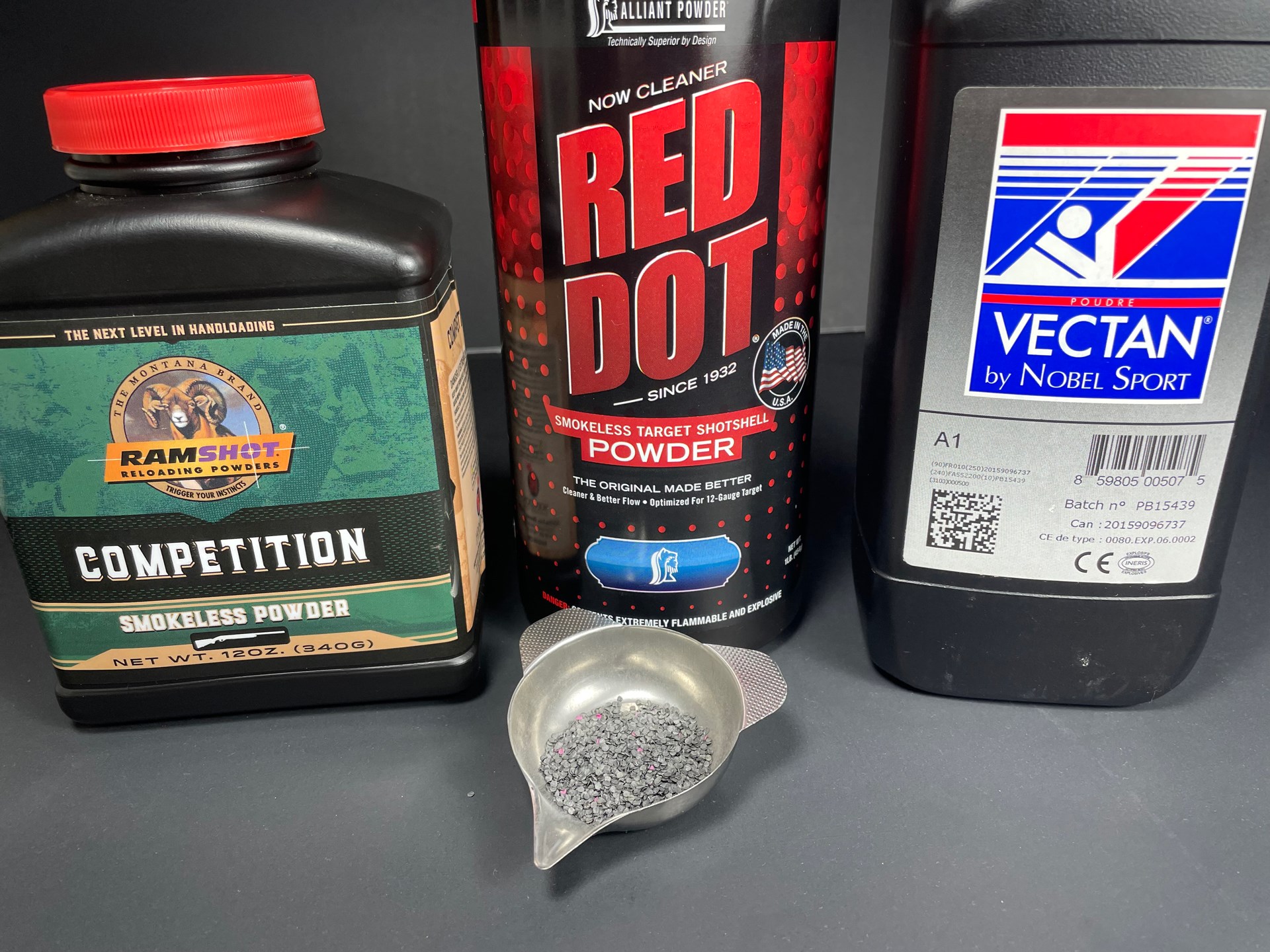 Flake-shaped propellants, such as Alliant Red Dot (c.) shown here, are typical of what’s used in shotshells. These sometimes pull double-duty for handgun ammunition.
Flake-shaped propellants, such as Alliant Red Dot (c.) shown here, are typical of what’s used in shotshells. These sometimes pull double-duty for handgun ammunition.
Some bullet manufacturers provide a great starting point with choices coined “most accurate powder tested,” or something similar; essentially, they’re disclosing the standout(s) discovered during their load development. Start here. However, know that said powder might not provide the highest velocity. More on that momentarily.
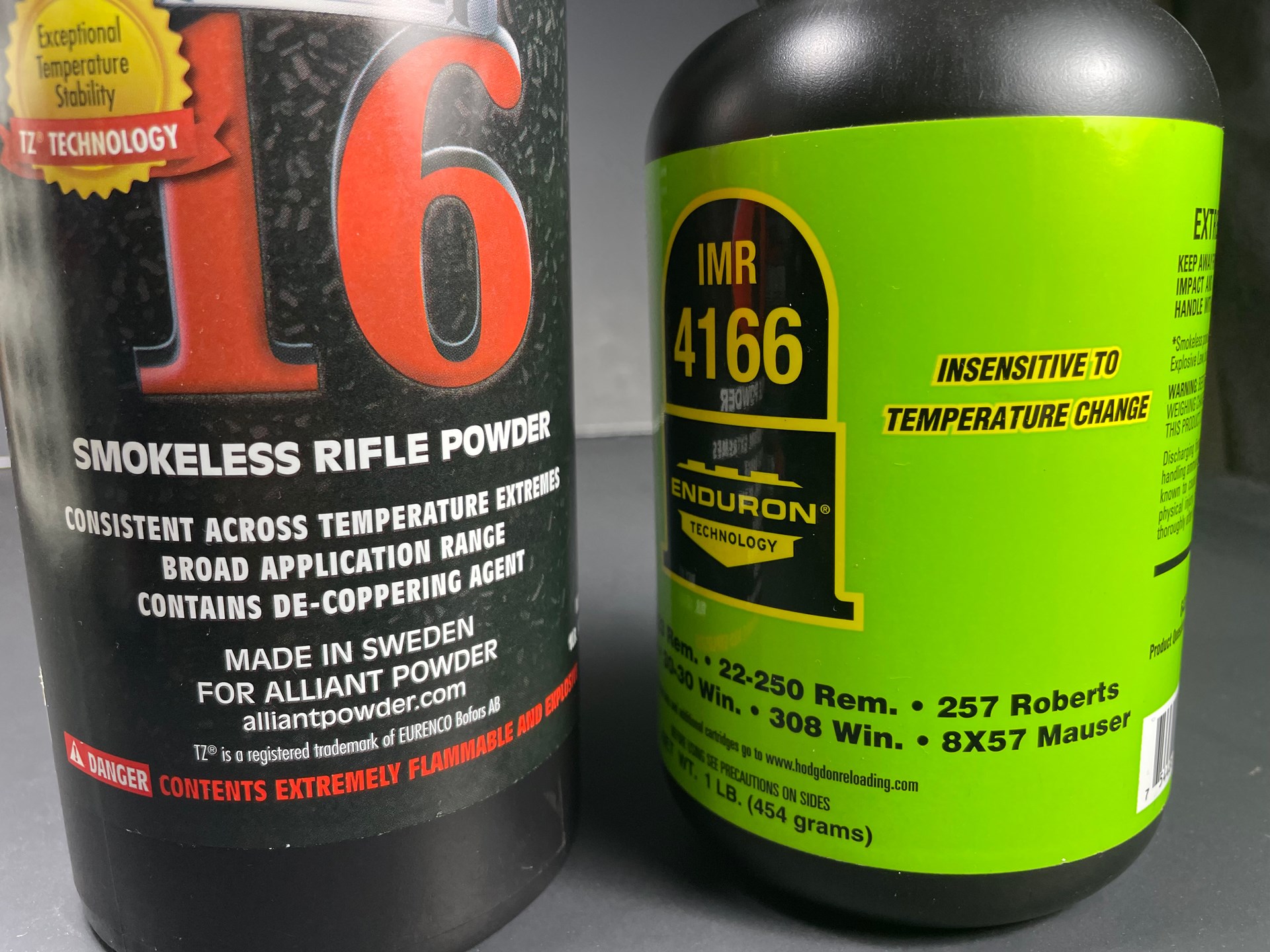 Long-range shooters will benefit from choosing a propellant that’s less affected by temperature swings, as variances affect trajectory and wind deflection. Propellant containers often denote this.
Long-range shooters will benefit from choosing a propellant that’s less affected by temperature swings, as variances affect trajectory and wind deflection. Propellant containers often denote this.
Frequently, handloading manuals for metallic cartridges also provide the most accurate load within each propellant, but you must still do the task of “working up” the load; don’t automatically assume that the exact load from the source will be the “cat’s meow,” or safe, in that firearm. You’ll need to watch for signs of excessive pressure while doing so. On the other hand, you don’t “work up” loads for shotshells; you strictly adhere to the recipe provided.
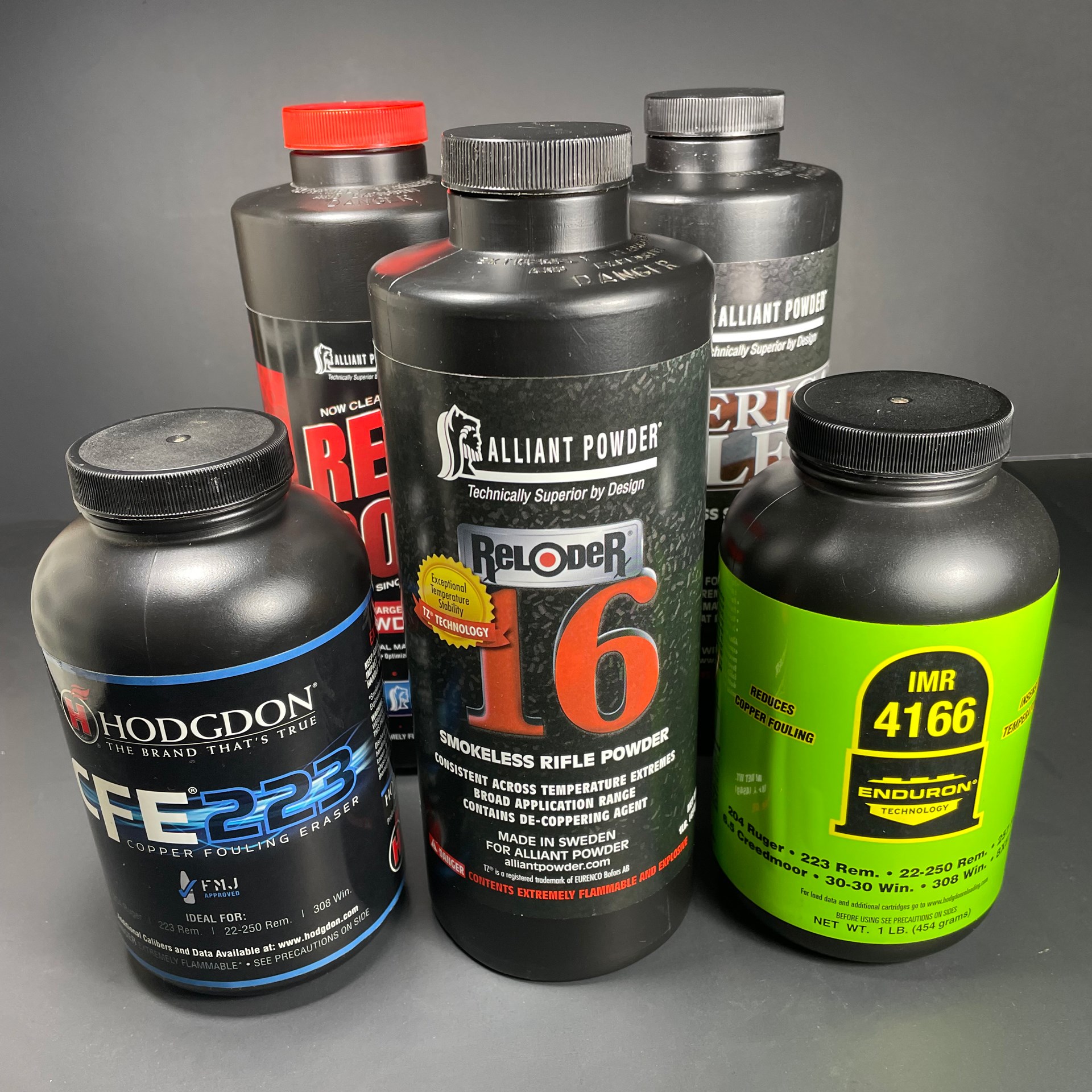 Options abound when it comes to smokeless propellants. Though it may seem overwhelming initially, by consulting a trustworthy source, you’ll find one that offers the characteristics you seek.
Options abound when it comes to smokeless propellants. Though it may seem overwhelming initially, by consulting a trustworthy source, you’ll find one that offers the characteristics you seek.
Beside propellant charges, the manuals/websites will, among other things, list velocities. Though, these are from specific barrel lengths (usually SAAMI-standard); deviating from them affects the ballistics. For instance, if your cherished .308 Win. has a 20” barrel as opposed to the 24” utilized for testing, you can expect to lose velocity over what’s published. As an example, Berger Bullets Reloading Manual, 1st Ed., reports that, in the .308 Win., “muzzle velocity will increase (or decrease) by approximately 20 f.p.s. per inch from a standard 24” barrel.” Every chambering is different with regards to deviation. To counter this, you can opt for a propellant—within the list deemed appropriate—that has a faster burn rate, so it’s consumed more quickly. Conversely, a rifle with a lengthier barrel can benefit from using a slower burning propellant. Referencing a relative burn rate scale in a manual or website is quick.
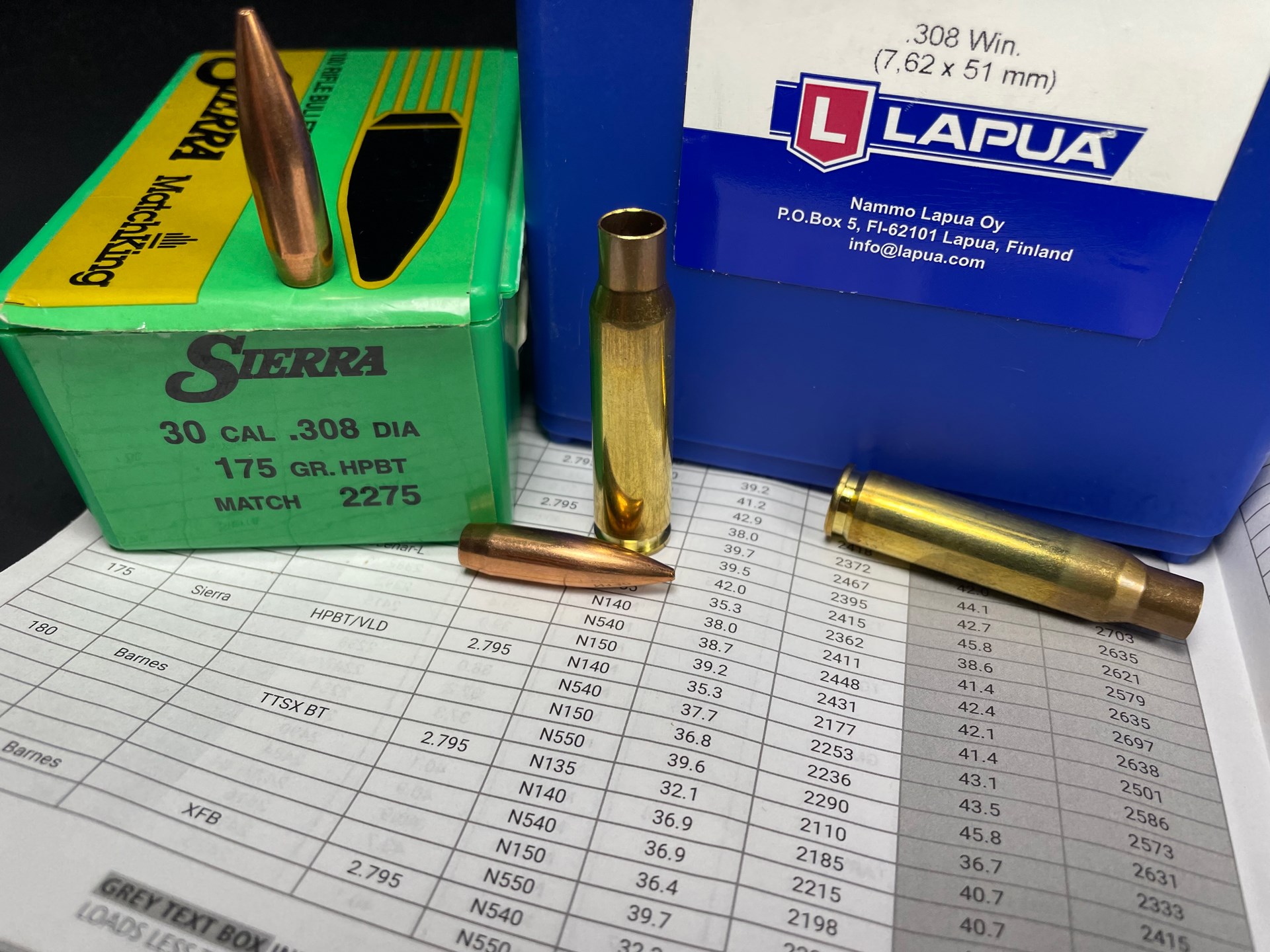 When using heavy-for-caliber bullets, such as 175-grain projectiles in the .308 Win., opt for high-energy propellants to attain a boost in velocity. Options within the Vihtavuori line, which are shown in this Vihtavuori pamphlet, are found in its N500 series.
When using heavy-for-caliber bullets, such as 175-grain projectiles in the .308 Win., opt for high-energy propellants to attain a boost in velocity. Options within the Vihtavuori line, which are shown in this Vihtavuori pamphlet, are found in its N500 series.
Similarly, pairing a heavy-for-caliber projectile with a high-energy propellant, such as one in the Vihtavuori N500 series (if applicable), can boost velocity. Lastly, if you’re using a semi-automatic rifle, ensure that the propellant you chose from the options is suitable for safe, reliable functioning in a semi-automatic mechanism. You can even double-check with the propellant manufacturer about the suitability of its products. Being overly cautious is beneficial.
Load density (or volume) should also be considered. For metallic cartridges, accuracy is all about consistency, including ignition. Best performance is typically found with 90- to 95-percent-plus load density. Why? Partially, it’s due to the propellant maintaining its position, regardless of the angle the cartridge/rifle at; it doesn’t leave much room for the propellant to settle when in the horizontal position. With 100-percentage (or more) load density, compression of the propellant is required, and so too will crimping to prevent bullet migration. In general, I like to choose a propellant with around 95-percent case fill, though that’s not hard and fast rule. In shotguns, load density affects component fit (and thus a solid crimp).
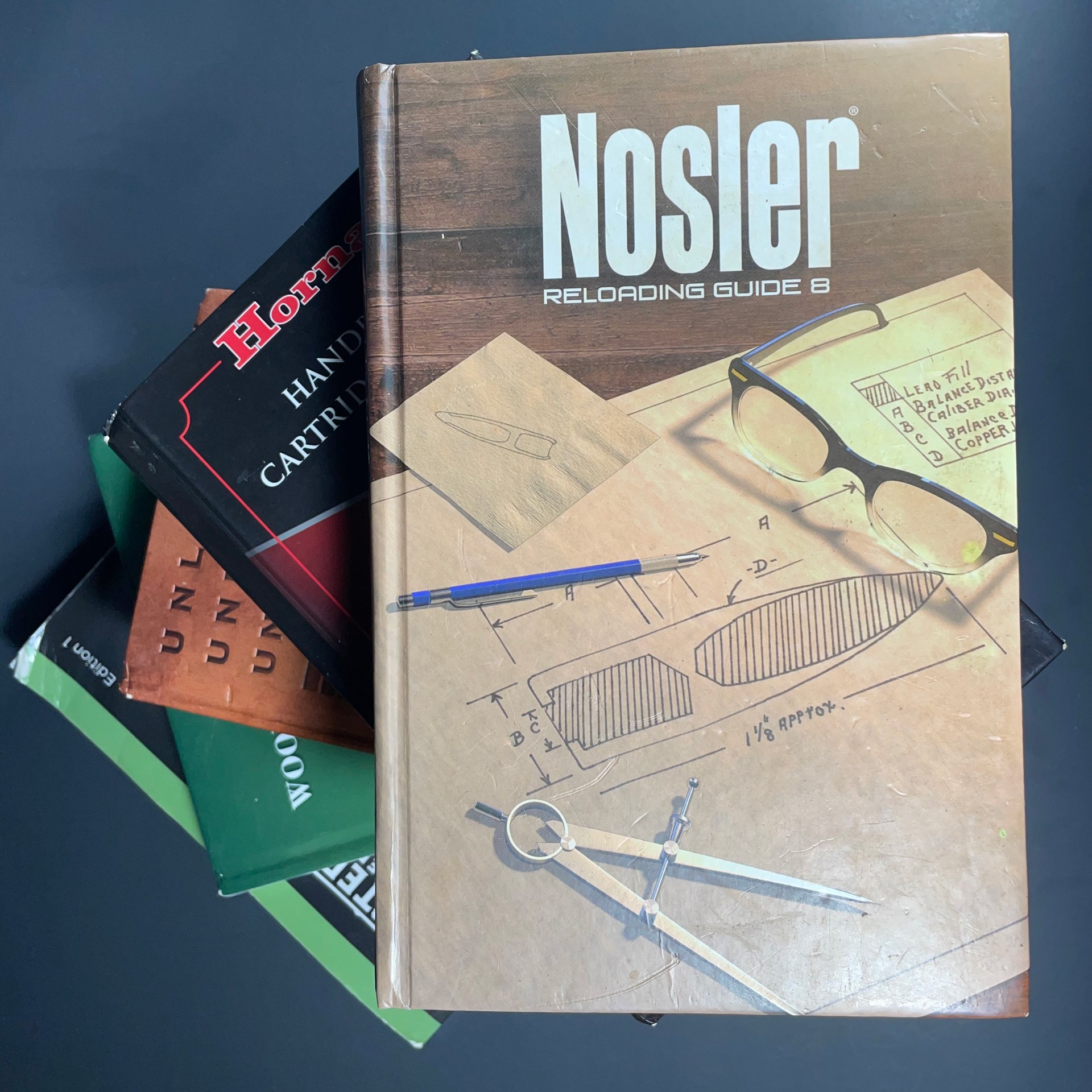 There are a plethora of reputable handloading manuals to select recipes from. Between these and the websites of propellant and bullet manufacturers, there is zero reason to trust questionable data online.
There are a plethora of reputable handloading manuals to select recipes from. Between these and the websites of propellant and bullet manufacturers, there is zero reason to trust questionable data online.
Newness of the propellant is also something to consider. While I still use stalwarts from yesteryear, newer propellants have attributes that give them an undeniable edge. Foremost, many modern propellants are less sensitive to changes in temperature. This matters because, as distance increases, variances in velocity will affect trajectory and wind deflection, making hits (or kills when hunting) more challenging. Propellants will always be affected to an extent by temperature swings, but the newer options are less so. Hodgdon has these propellants in the Extreme series, but other companies are increasingly adding them. What’s more, many of the newer propellants have additives that reduce/remove copper fouling through shooting. Sounds nonsensical, but it’s not; in fact, it was first employed for military applications. Such propellants include: Hodgdon CFE 223, BLK, and Pistol; IMR (those with Enduron Technology*); Vihtavuori (multiple); and Alliant Reloder TS-11, TS-15.5, 16, 23, 25 and 26, to name a few.
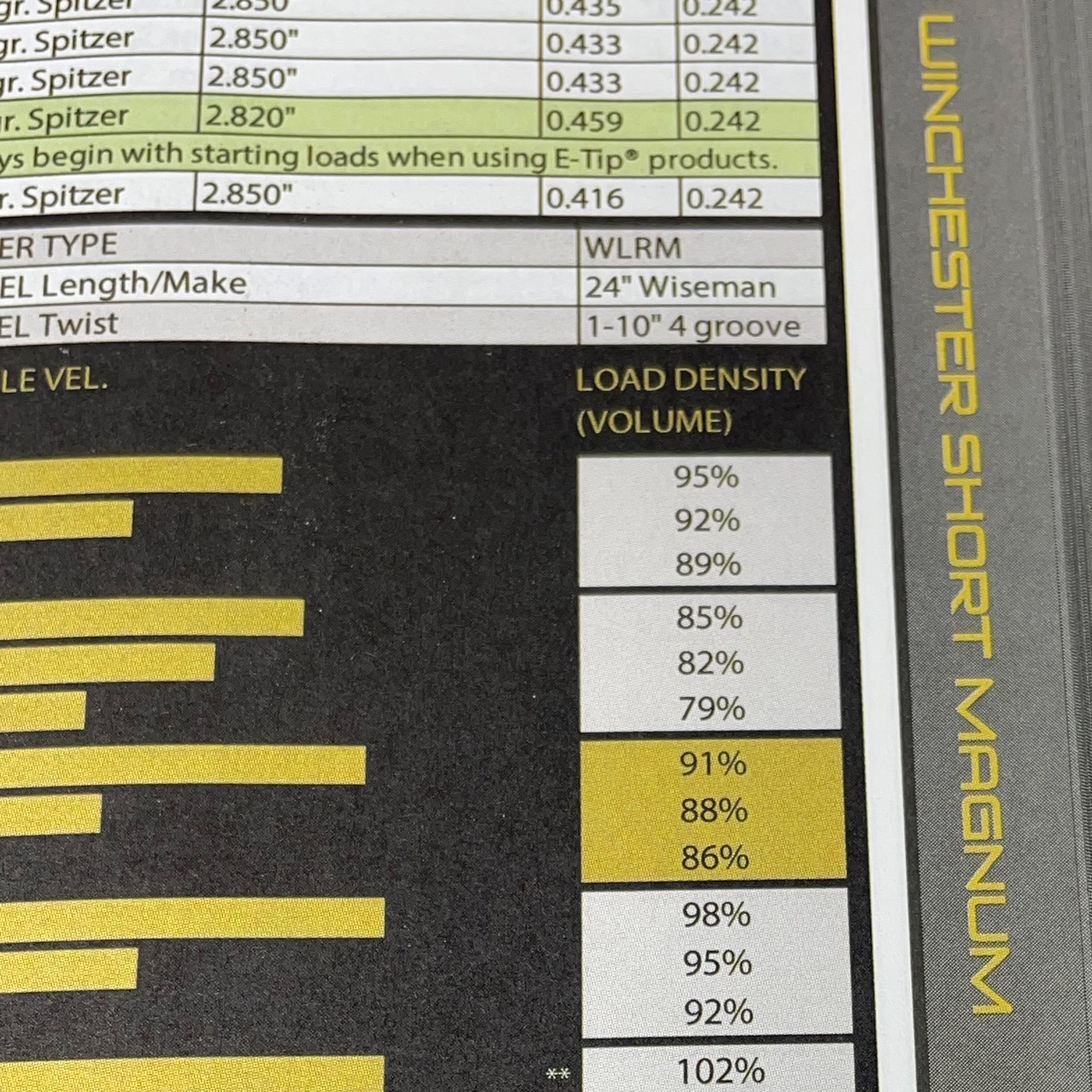 Case fill, or load density, is important to consistent ignition of the propellant. In general, opt for powders that have load densities 90 percent or more.
Case fill, or load density, is important to consistent ignition of the propellant. In general, opt for powders that have load densities 90 percent or more.
Guided Practice
Here is an example of the propellant selection process. Suppose I want to load the Berger 175-grain Match OTM Tactical bullet for my 20”-barreled, bolt-action .308 Win. using Lapua brass (with LR primer) and Vihtavuori propellant. On Vihtavuori’s website, the company lists eight options. Berger’s handloading manual identifies a total of 18 choices across makers. Unsurprisingly, the highest velocity with a Vihtavuori powder is attained using N550, a high-energy propellant. At 2,628 f.p.s., N540 is within 13 f.p.s. of it at the max load (which I never load to), and it would be a better choice. The high velocity is appealing; so too,, is the clean-burning nature and temperature stability of the N500 series. The small, symmetrical granules meter well from a powder measure and compact nicely, and N540 is slightly faster burning that N550, so I’ll lose less velocity due to the shorter barrel. Lastly, case-fill is nearly 100 percent. Could I choose one of the other options and lose less velocity still? Yes, but I opt for N540. Simple.
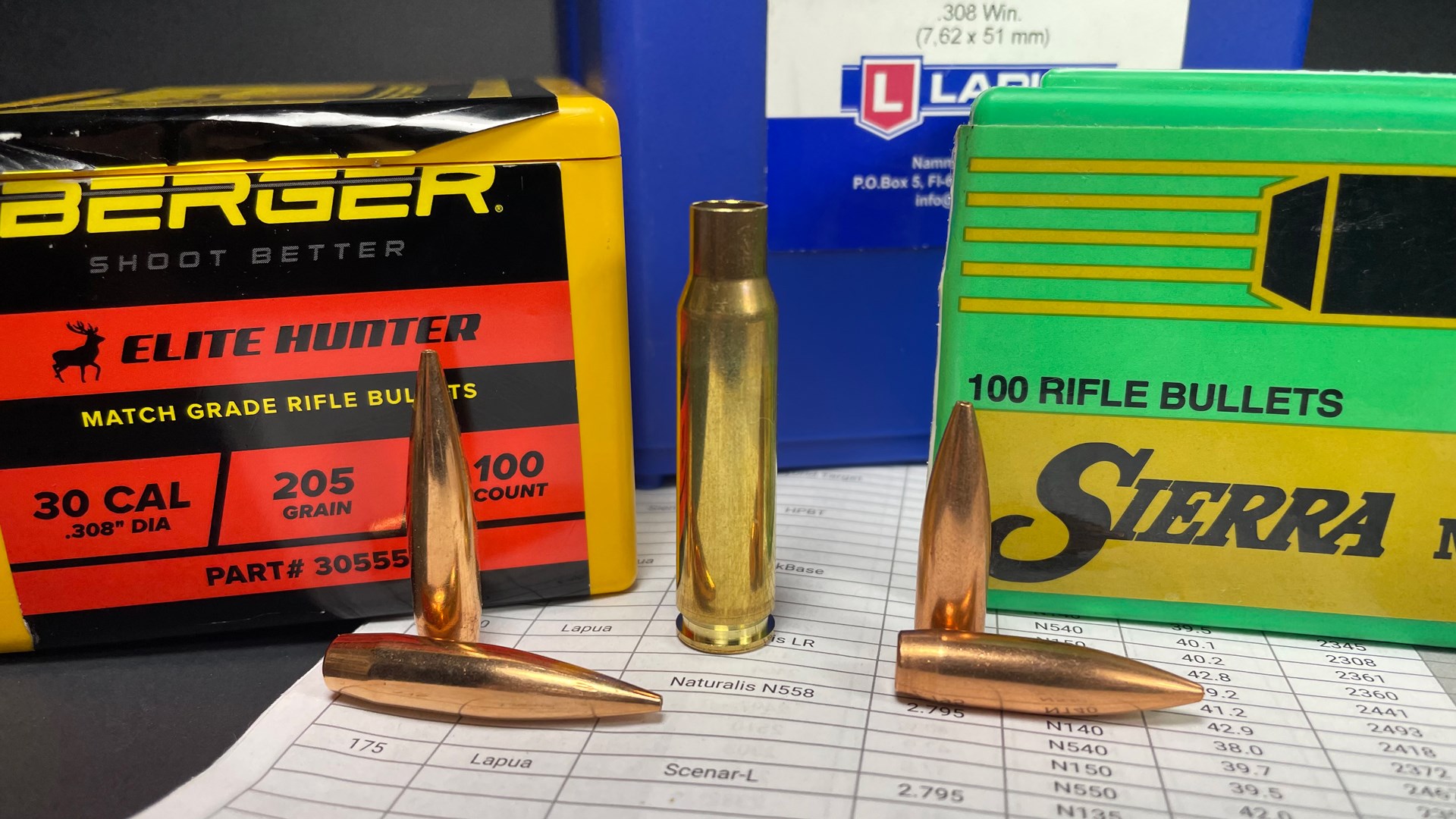 Svelte, heavy-for-caliber bullets are all the rage today with long-range riflemen due to their high ballistic coefficients, which improve the external ballistics. Be sure to pair them with a high-energy, temperature insensitive propellant capable of attaining top velocities.
Svelte, heavy-for-caliber bullets are all the rage today with long-range riflemen due to their high ballistic coefficients, which improve the external ballistics. Be sure to pair them with a high-energy, temperature insensitive propellant capable of attaining top velocities.
Selecting a propellant shouldn’t be like throwing a dart blindfolded. Use what you learned in this article to make an informed choice, and you should see the fruits of your decision-making on the range and in the field.












